A Klein bottle and an ellipse: X Zhu-Nowell on reimagining arts institutions
by Ranjana DaveApr 25, 2025
•make your fridays matter with a well-read weekend
by Vladimir BelogolovskyPublished on : Feb 22, 2020
After focusing his entire career on cities, Dutch architect, urbanist, writer, educator, and co-founder of Rotterdam-based Office for Metropolitan Architecture (OMA) and its research arm AMO, Rem Koolhaas spent the last decade on collecting material about the countryside. He insists that today it is the countryside where the most radical, modern components of our civilisation are taking place. Is countryside our future? This and many other questions are addressed by Koolhaas in the architect’s extensive research, which is now the subject of his new book Countryside, A Report by Taschen and exhibition, Countryside, The Future that opened at the Guggenheim Museum in New York on February 20, 2020. It will be on view for six months through the summer and will then travel to China, Japan, and Africa.
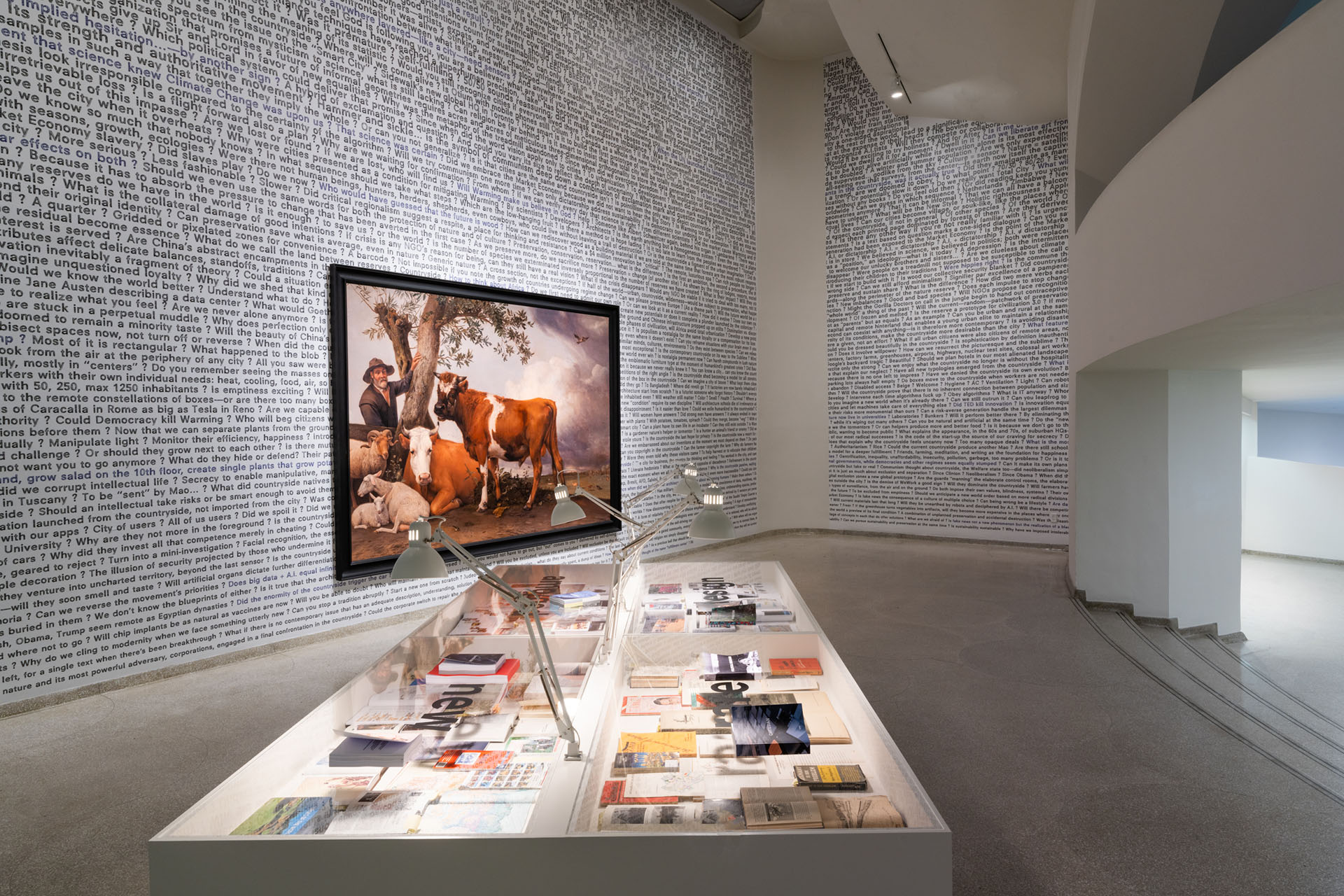
Countryside, The Future is organised by Troy Conrad Therrien, first curator for Architecture and Digital Initiatives at the museum, in collaboration with Koolhaas and Samir Bantal, director of AMO, to examine how the countryside around the world has been transforming in the most radical ways by technology, culture, politics, migration, real estate speculation, and, not least, by climate change. The future we are presented here is overwhelming, so if you want to learn from it prepare for some serious reading.
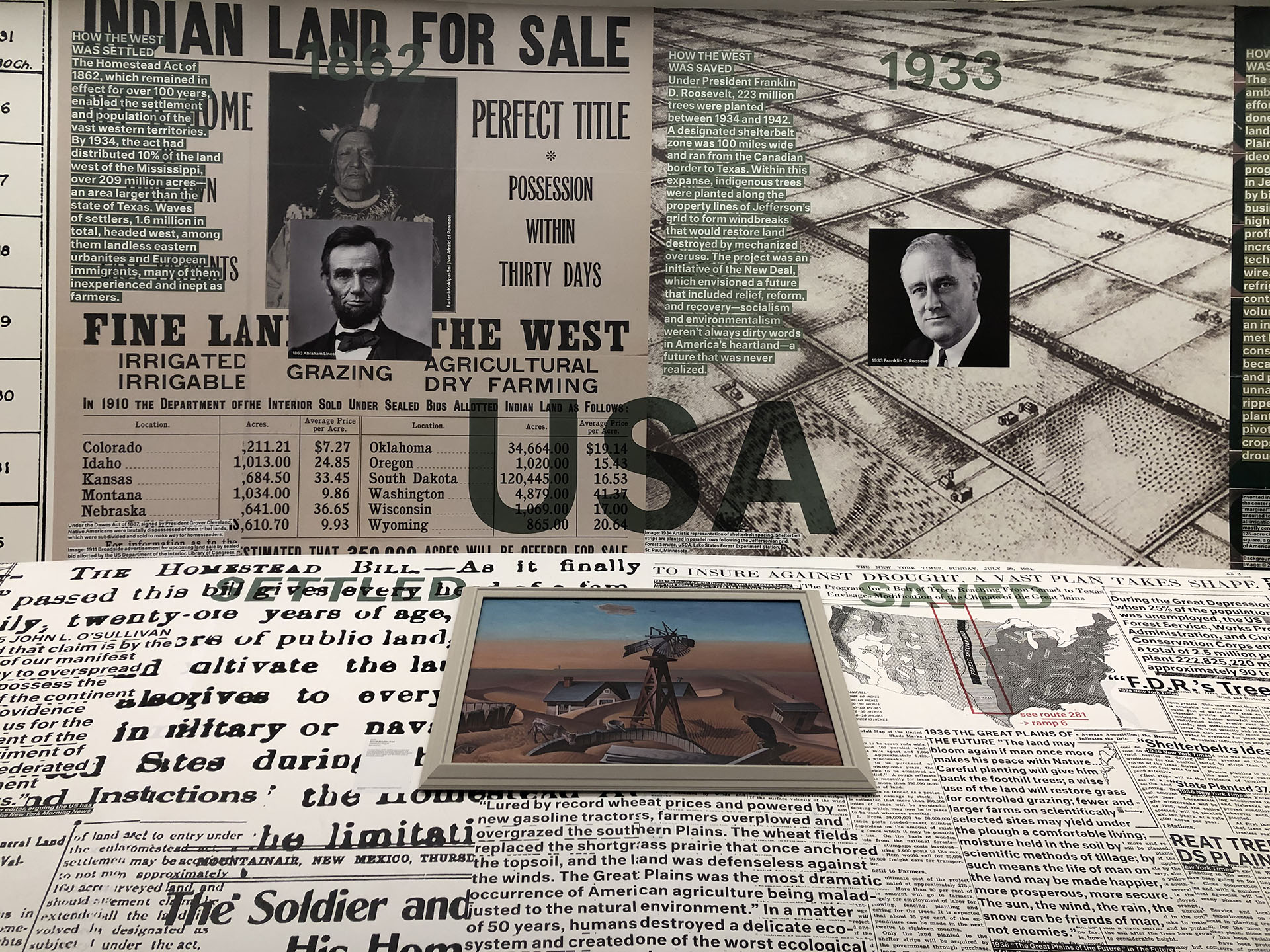
As we begin climbing up the continuous six-level ramp, we encounter endless collage of snapshots of the countryside’s mythology, history, politics, ecology, imagery, graphs, maps, statistics, films, archival materials, and art reproductions. There are case studies of ambitious agricultural programs gathered from Mao’s China, Stalin’s and Khrushchev’s USSR, Nazi Germany, and democratic USA, among others. And then there are texts, texts, and more texts reproduced in large especially designed font, slightly blurry and looking like hand-written. The inexhaustible material plunges us into the world of countryside – what it used to be, what it has become, and what to expect from it in the near future.
We encounter a seemingly haphazard accumulation of gargantuan and featureless industrial sheds called Tahoe Reno Industrial Center (TRIC) in the Nevada desert, the largest industrial park in the world, the backroom of Silicon Valley’s big tech companies, lured here by tax incentives and smooth building permit process. We are educated about the Cartesian grid, originally proposed by Thomas Jefferson, projected onto America’s ‘savage wilderness’ and partitioned into 640-acre squares (one square mile or 2.6 sq. km.) of farmland to ease its survey, use, and sale. We learn about thawing permafrost in Eastern Cyberia in Russia that triggers release of methane and exacerbates global warming. We are briefed on Chinese-funded infrastructure projects in Africa, gentrification, sustainability, preservation, leisure and escapism, commercialism, popular culture, and on and on. And we are introduced to the latest technology such as electric vehicles, drones, satellites, and tractors, such as the one now parked outside of the museum’s entrance on Fifth Avenue, right next to an industrial container that blocks most of the sidewalk, so pedestrians don’t miss a chance to see how tomatoes are cultivated in a finely tuned microclimate under pink LED lights.
All of the findings and observations that Koolhaas assembled here with the help of his global practice, as well as students in the US, China, Japan, The Netherlands, and Kenya, and many other individuals are certainly striking, fascinating, and provocative.
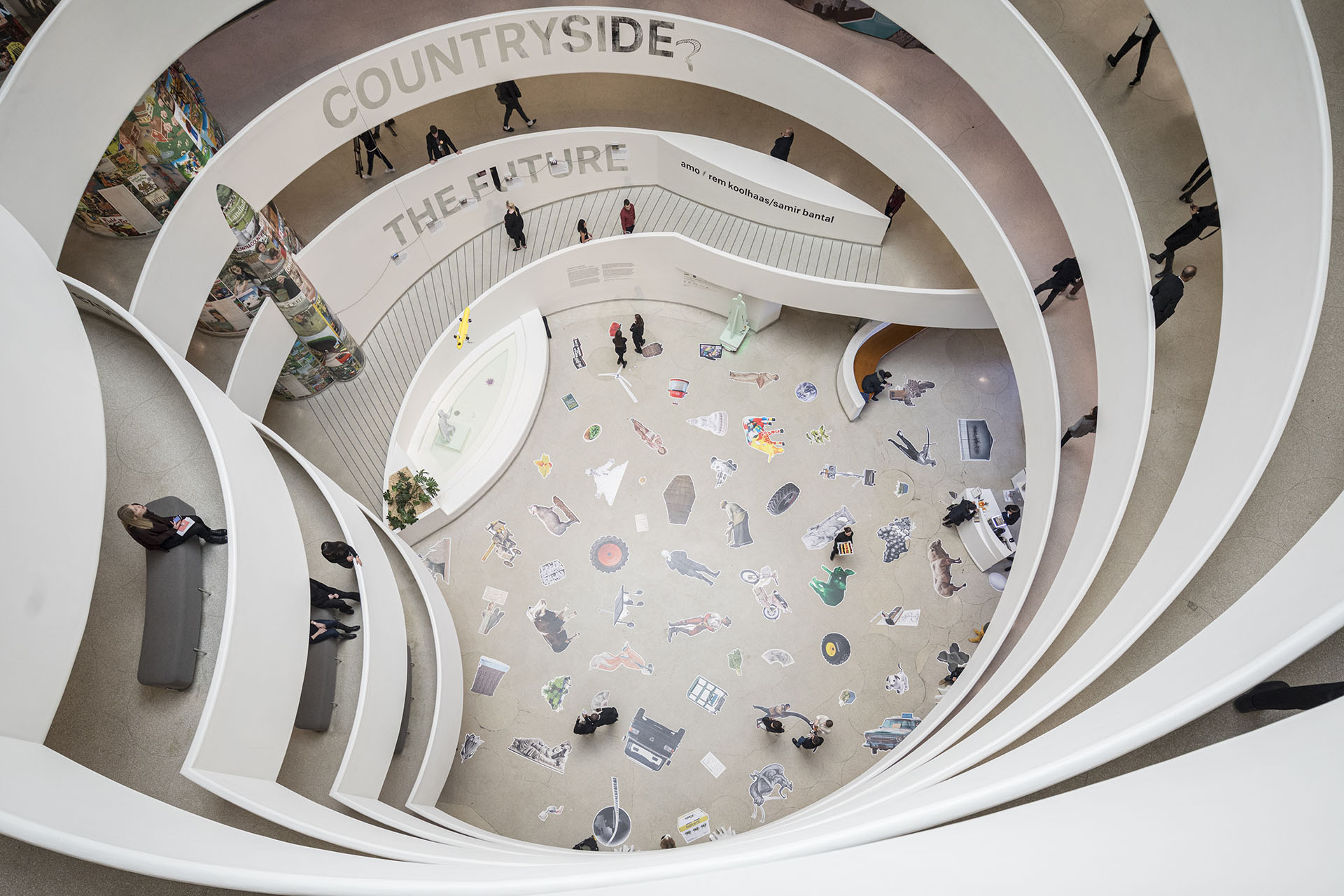
Yet, why all of these facts and predictions are being shown at a major art museum? Why do we need the walls of a major art museum to be turned into a bulletin board? There are hidden messages in this act. One of the key questions here – what is the role of an art museum now? If we accept what curator Hans Ulrich Obrist has observed that art is not a thing, but a discourse then there is no contradiction here. After all, where else should the most pressing issues of our time be put on display, but at art venues to provoke a meaningful discussion?
Over the past 10 years, I have been collecting information and material about a currently deeply neglected subject – the countryside. – Rem Koolhaas
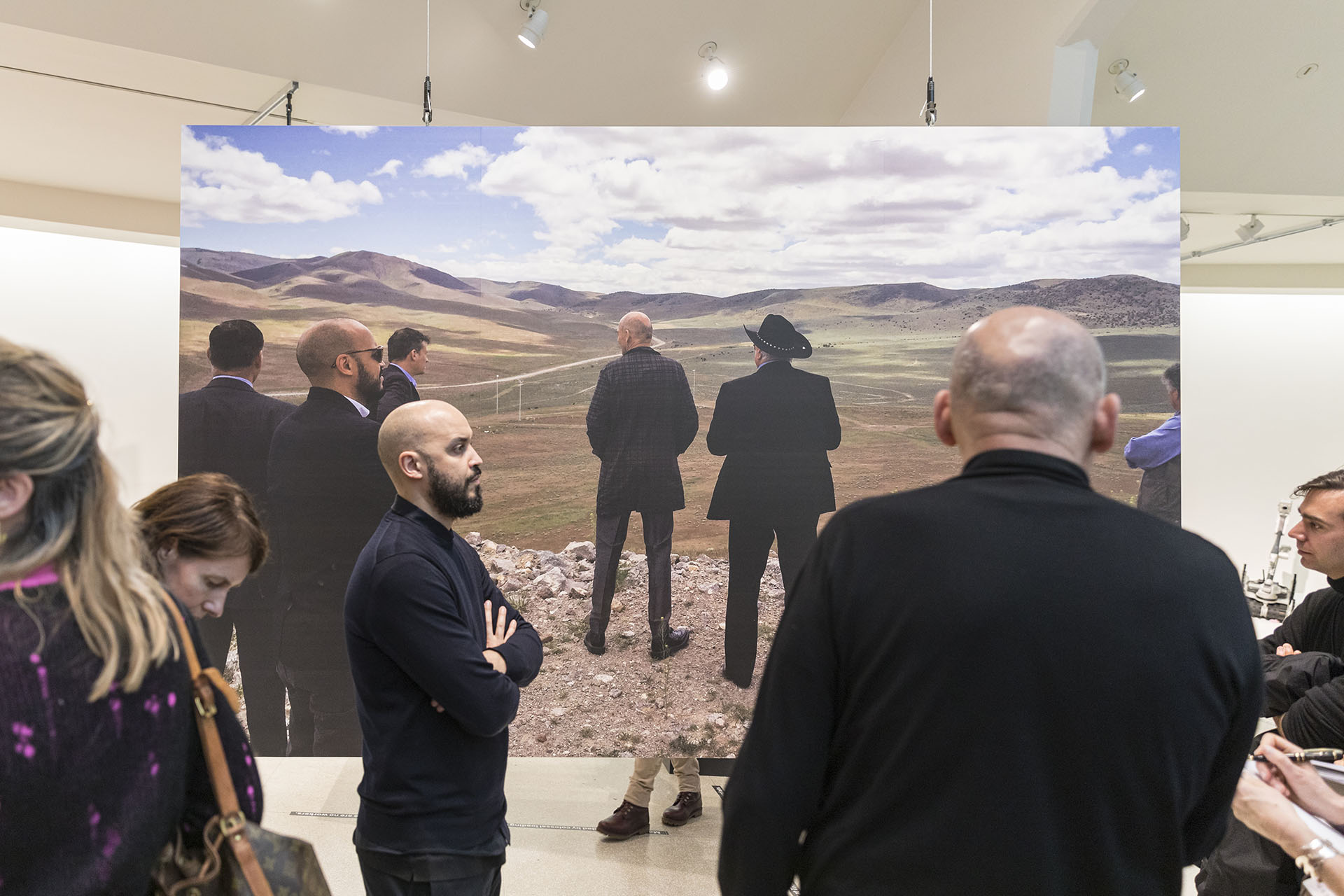
The other hidden message here is in the show’s presentation technique. The architect maintains that his show has nothing to do with art or architecture and at first glance it may appear so. But, as you walk into the installation, the very first image you see is Rem Koolhaas himself, shown from the back, overlooking the mountains in front of him. The very first sentence under the image states, “Over the past 10 years, I have been collecting information and material about a currently deeply neglected subject – the countryside.” As we progress, we read many of his first-person narratives and at the very top we come across a huge photo of Koolhaas, again from the back, this time at full height and surrounded by a group of businessmen. He is observing the Nevada Desert and they are looking at him. Is he the saviour? This personal journey style presentation is chosen very deliberately and very artistically. This couldn’t have happened anywhere but at an art platform.
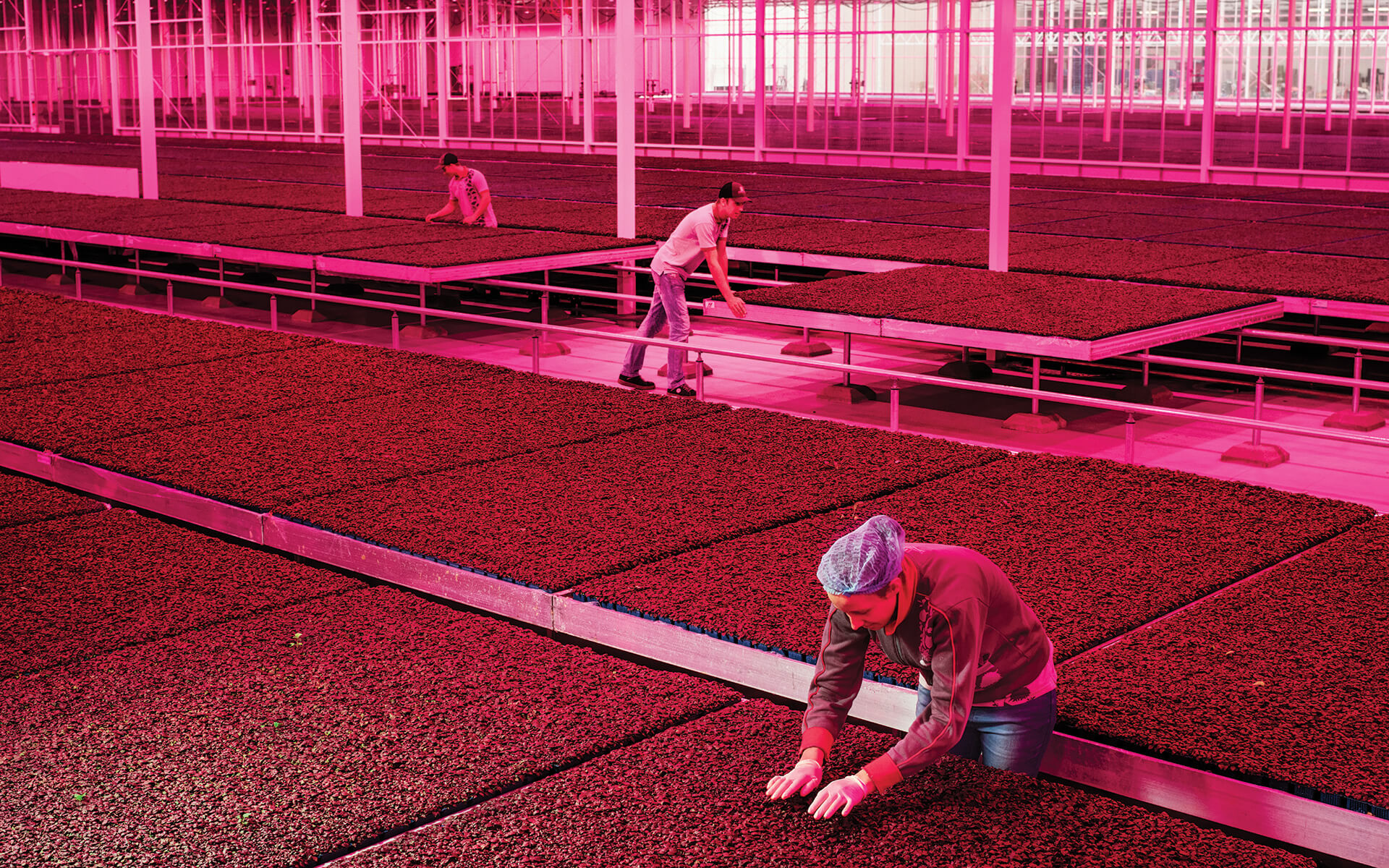
The Guggenheim show is not exactly a prediction, but a warning – what will happen if the countryside keeps developing without architects? This vast zone has been becoming increasingly technologically advanced, buildings and spaces between them, as well as their interiors, are turning into depopulated and automated spaces. We are witnessing how nature is getting flattened and ordered, turning the whole world into an alien nature of being neither urban nor rural. This in-between state is becoming increasingly ambiguous. Perhaps it has to do with the fact that by 2007, according to the UN, the number of people living in urban and rural areas became equal for the first time in history. That’s when many analysists raised their concern – now more than half of the world’s population lives in cities. Koolhaas looked at the same situation from the opposite end. He pointed out, “Half of the world now lives in cities, but the other half – doesn’t.” And while the urban half occupies only 2 per cent of the entire area of the world, the rural half takes the rest of the territory, which accounts for 98 per cent. Where should we pay more attention? It is implied that the choice is kind of obvious.
“I am interested in the country for the same reason I was paying attention to New York in the 70s. No one else was looking.” – Rem Koolhaas
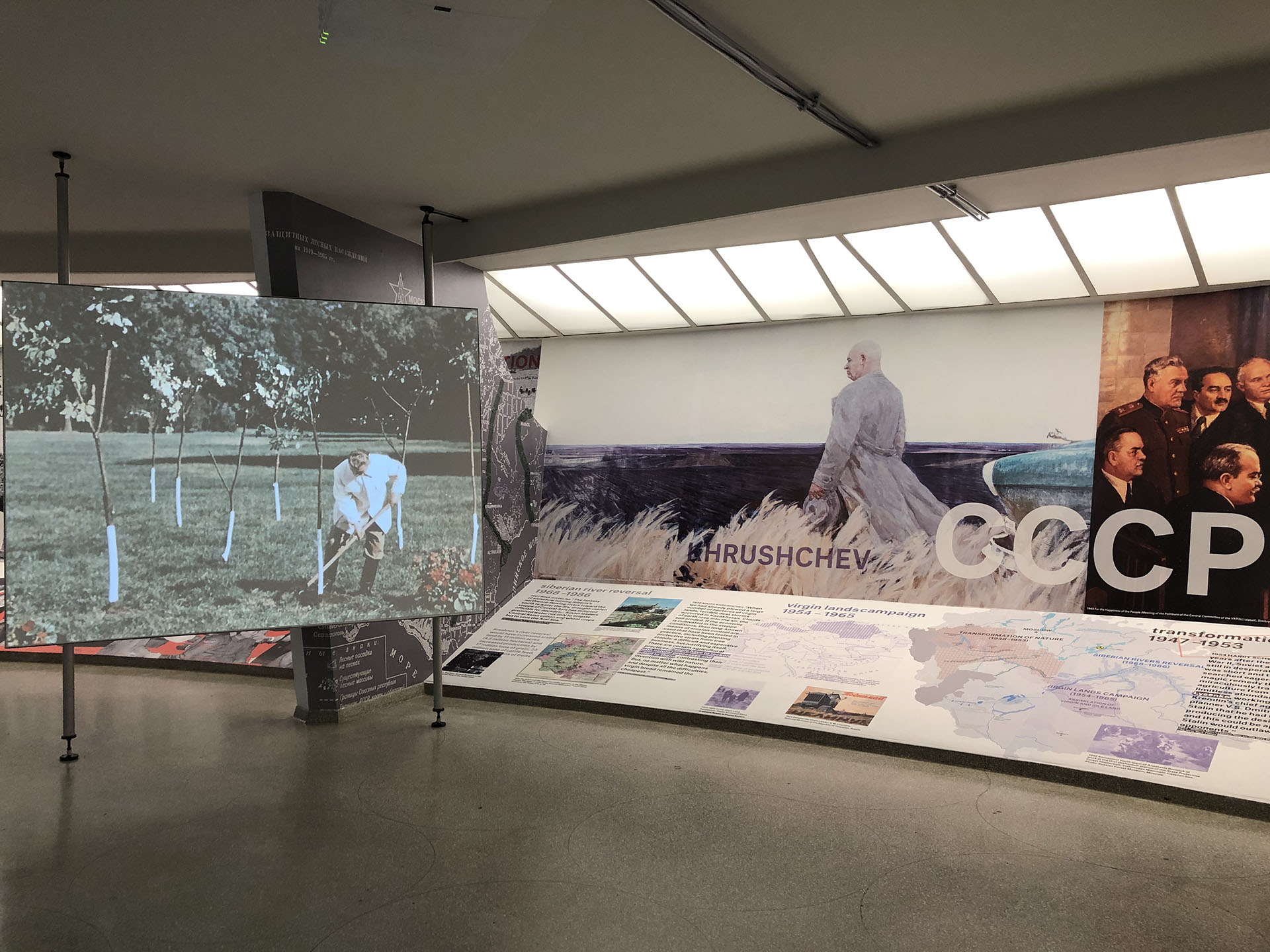
“I am interested in the country for the same reason I was paying attention to New York in the 70s. No one else was looking.” There is a contradiction in this statement, of course – if Koolhaas found so much evidence that the countryside is being transformed so fundamentally, this only points to the conclusion that there is a lot of attention paid to it already! In that regard we are dealing here with Koolhaas’ own subjective revelation about the countryside. Let’s take another look at the new buildings in the Nevada Desert, or more precisely, his fascination with them. There is nothing special about these bland boxes. Why should we pay any attention at all? Koolhaas says that these creations are based strictly on codes, algorithms, technologies, engineering, and performance, not intention. He means, not artistic intention. In other words, they are not designed by an architect. He says that these ‘post-human’ colossal sheds are boring and banal. He suggests that architects could do a better job designing them. What he is really worried about is that architects have lost their control in the cities and there is now plenty of evidence that the countryside can be developed without them as well. He wants to challenge that and save the profession in the process.
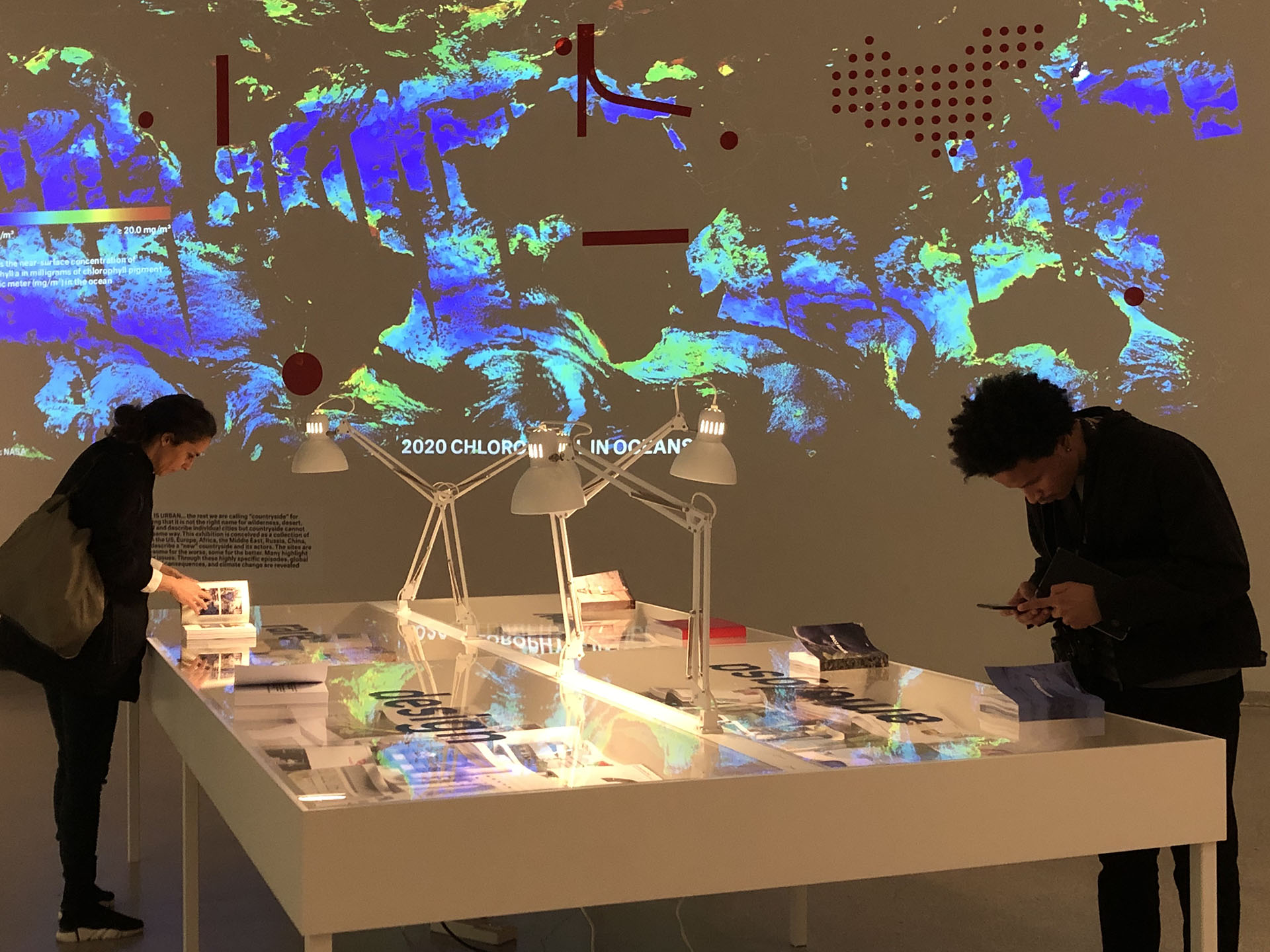
Whether the countryside requires our attention more than cities is hard to say. We are not shown any real evidence of that. Quite the contrary, as we know that hundreds of millions of people are still being relocated into cities in China and it is predicted that a number of urban centers in India and Africa will grow into megacities of 50-80 million people by the end of this century. There is no doubt that we need to pay attention to the countryside, but not at the expense of overlooking our cities. Both are going through tremendous transformations and we urgently need to address them head on. Should we even separate the two?
More than 40 years ago, Koolhaas launched his career with an urban manifesto Delirious New York, which, by the way, was also first presented at the Guggenheim. He has now written his manifesto on the countryside. His observations are valid and now that architects can refer to both, they are better armed to address the most urgent projects wherever they are. What’s next? I am looking forward to seeing his own built projects developed in the countryside in the near future. After all, why concentrate just on what constitutes a mere 2 per cent of the world’s territory?
by Anushka Sharma Oct 06, 2025
An exploration of how historic wisdom can enrich contemporary living, the Chinese designer transforms a former Suzhou courtyard into a poetic retreat.
by Bansari Paghdar Sep 25, 2025
Middle East Archive’s photobook Not Here Not There by Charbel AlKhoury features uncanny but surreal visuals of Lebanon amidst instability and political unrest between 2019 and 2021.
by Aarthi Mohan Sep 24, 2025
An exhibition by Ab Rogers at Sir John Soane’s Museum, London, retraced five decades of the celebrated architect’s design tenets that treated buildings as campaigns for change.
by Bansari Paghdar Sep 23, 2025
The hauntingly beautiful Bunker B-S 10 features austere utilitarian interventions that complement its militarily redundant concrete shell.
 surprise me!
surprise me!
make your fridays matter
SUBSCRIBEEnter your details to sign in
Don’t have an account?
Sign upOr you can sign in with
a single account for all
STIR platforms
All your bookmarks will be available across all your devices.
Stay STIRred
Already have an account?
Sign inOr you can sign up with
Tap on things that interests you.
Select the Conversation Category you would like to watch
Please enter your details and click submit.
Enter the 6-digit code sent at
Verification link sent to check your inbox or spam folder to complete sign up process



by Vladimir Belogolovsky | Published on : Feb 22, 2020
What do you think?